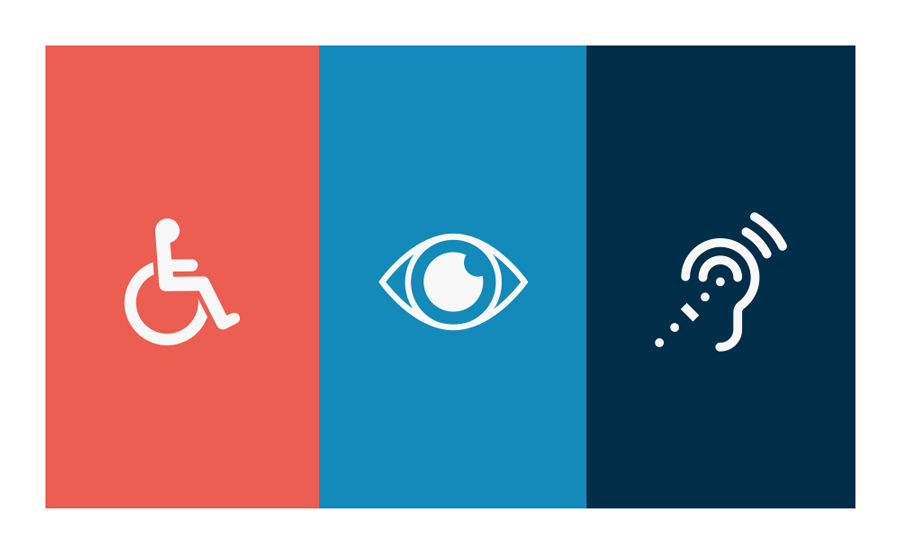Why Your Website Should Be ADA Accessible
- Sullivan Marketing Co.

- Nov 18, 2020
- 3 min read
Unless you're a lawyer, it's likely you wouldn't be super excited about becoming a part of a lawsuit. That's why it's important for businesses, including their websites to be in compliance with the Americans with Disabilities Act. Being in compliance will significantly decrease your chances becoming a part of a lawsuit(s) and potential debt from legal fees. Plus, it's the right thing to do. Do you know if your website is at risk for an ADA complaint?

First becoming law in 1990, according to the U.S. Department of Labor, the Americans with Disabilities Act (ADA) "prohibits discrimination against people with disabilities in several areas, including employment, transportation, public accommodations, communications and access to state and local government' programs and services." This includes how businesses operate online, making website accessibility unquestionably important. Over the past few years, there has been an uptick of lawsuits against companies who are alleged non-compliant. In 2018 & 2019 alone, over 2,200 lawsuits were filed in federal courts for small to medium sized businesses. Not only does making your website ADA accessible help to avoid issues with the law, but it also provides opportunity for additional consumers to access your products and services- a win-win.
Does my website need to comply? If your website is for a business that has a physical, brick-and-mortar location, you definitely need to be in compliance. Since your website is considered a digital extension of your business, it is subject to ADA regulations. But what if you do not have a physical storefront? It's better safe than sorry. There have been several federal court decisions that say yes, they do need to comply. So it's better to stay ahead of the game and be proactive here.
Our recommendation: make sure you're in compliance with ADA regulations to save yourself from potential future headaches and make the world (wide-web) a better, more accessible place for all.

Here are a few real life examples of lawsuits within the real estate, healthcare and food & restaurants sector:
Real Estate: A real estate company was sued due to their website not having proper accessibility for visually impaired users. Images with alt text did not exist which meant that those with vision issues didn't have the option to read text describing the image. Healthcare: In the healthcare sector, it is of obvious importance for websites to be compliant. Those with disabilities likely have a higher need to access healthcare websites. Again, there have been several cases where the visually impaired didn't have proper access to healthcare websites' information.
Food & Restaurants: With the pandemic trending the food and restaurant sector towards becoming more digitally friendly, the importance of improving online ordering capabilities for both viewing and reading menus has significantly increased. While there are several larger corporations being targeted for violations, the majority have been smaller businesses. A pending lawsuit with potentially massive legal fees could be detrimental to those small businesses already struggling in the current environment. So why take the risk?

What can I do to protect my business? Here are the five most common ADA compliance issues on website:
1) Alt Tags: These provide alternate text for a photo for the visually impaired. If the user cannot see the graphic, they can at least read the text and won't miss out on any information.
2) Headings: When it comes to headings, prioritize functionality over style. Adjustments to headings need to be made in the CSS and not the actual order of your headings. By making headers bigger or smaller via heading tags, it could become an issue for users who see H1, H2, etc. not as sequential order, but as visual elements. This makes it difficult for some users to read the webpage accurately.
3) ARIA Landmarks: Using landmarks to identify the header, footer, sidebar, and page content allows screen readers to prioritize what they read to their users. ARIA readers are common tools that utilize landmarks for screen reading.
4) Navigation: If your website have a lot of pages, be sure your navigation in your header is accurate, use breadcrumbs, and make sure all pages are set-up properly. An 'orphaned page' or a webpage without another page linking to it, makes screen readers jobs difficult for obvious reasons.
5) Plug-ins: Plug-ins are rarely ADA compliant (and slow down your site's speed), so limit how many you use on your site. Make sure to fully research each plug-in to be sure it's in compliance before installing.
Final Recommendation: Check with your website developer to make sure your website is in compliance with ADA regulations. As always, if you don't have a trusted web developer on call or have any questions, we're happy to assist!
.png)



Comments